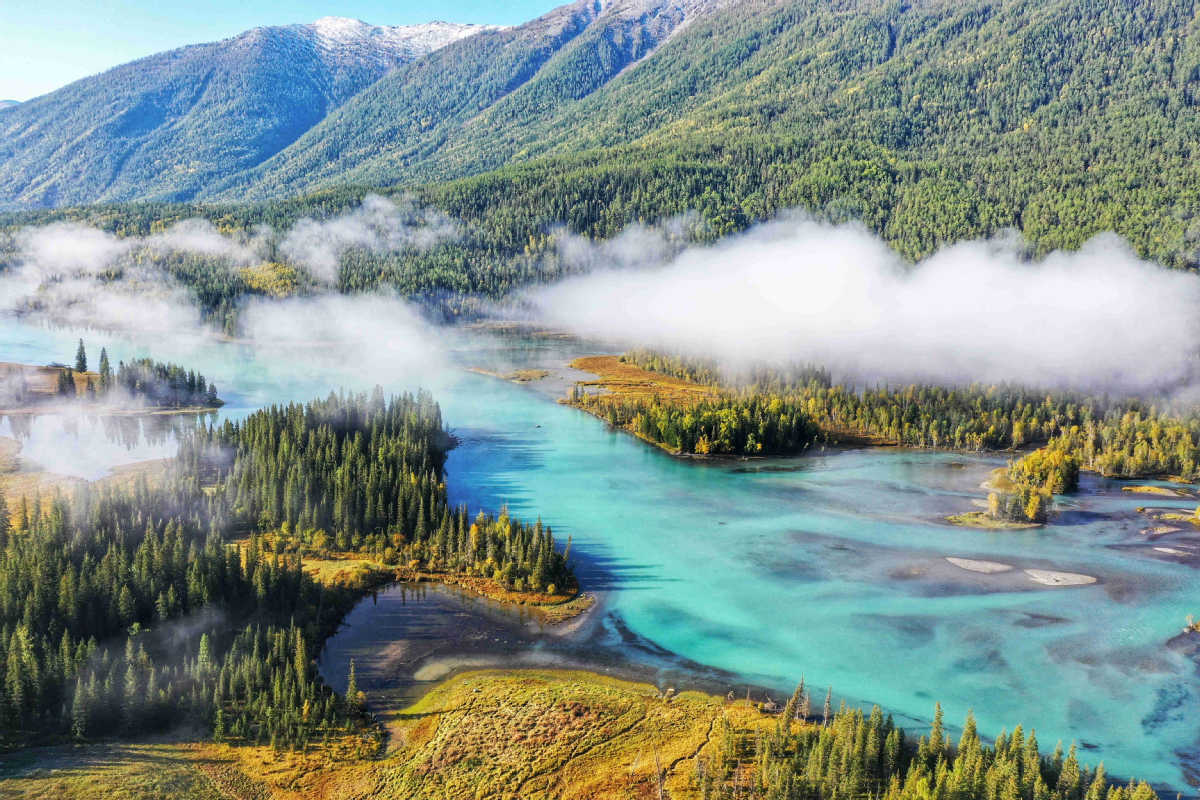
Urumqi, the capital of Xinjiang, is a fascinating fusion of modernity and tradition, serving as the gateway to one of China’s most diverse and culturally rich regions. The city, located in the far northwest of China, has evolved into a bustling urban center that reflects the unique blend of Uyghur, Han Chinese, Kazakh, and other ethnic cultures. Whether you’re drawn to its vibrant bazaars, scenic landscapes, or rich history, Urumqi is the starting point for any 新疆包團 exploration of Xinjiang. Beyond the urban sprawl of Urumqi itself, the surrounding region offers a wealth of natural and cultural experiences, making it an ideal destination for those looking to uncover the heart of this mysterious and vast land.
- The modern Cityscape of Urumqi
Urumqi’s cityscape is a blend of sleek modern architecture and traditional Uyghur influences. The city boasts a bustling commercial hub, with towering skyscrapers and sprawling shopping malls, yet it is still home to quiet neighborhoods and charming, historic districts. A visit to the International Grand Bazaar offers an immersive experience, where visitors can shop for exotic spices, textiles, and unique handicrafts from across Central Asia. The atmosphere here is electric, with the scents of freshly baked naan bread, sizzling skewers of lamb, and fragrant herbs filling the air. Urumqi is also home to modern amenities such as luxury hotels, top-tier restaurants, and cosmopolitan cafes, offering a blend of Chinese and Central Asian cuisines that reflect the city’s multicultural identity.
- Exploring the Natural beauty of Urumqi’s Surroundings
While Urumqi itself is a vibrant urban center, its surrounding landscapes provide a peaceful escape into nature. Just a short drive from the city, you can find the picturesque Tianchi Lake (Heavenly Lake), nestled high in the Tianshan Mountains. This glacial lake is renowned for its stunning beauty, with turquoise waters set against a backdrop of towering snow-capped peaks. It’s a popular spot for hiking, boating, and picnicking, offering visitors a tranquil experience just outside the city’s hustle and bustle. For those interested in exploring the region’s natural diversity, the Red Mountain (Hong Shan) in Urumqi offers a scenic view of the entire city and surrounding countryside. The mountain’s red sandstone cliffs make for a unique and striking visual, especially during sunrise or sunset when the rocks take on an almost fiery glow.
- Cultural Exploration: The Uyghur Influence
Urumqi is an ethnic melting pot, with the Uyghur people forming a significant portion of the population. Their culture, language, and traditions infuse the city with a distinctive atmosphere that sets it apart from other urban centers in China. To get a deeper understanding of the region’s Uyghur heritage, a visit to the Xinjiang Regional Museum is a must. The museum showcases the rich history of the Uyghur people, with exhibits on ancient Silk Road artifacts, the diverse ethnic groups of Xinjiang, and the region’s Islamic traditions. Urumqi’s Uyghur restaurants are another highlight of the city, offering traditional dishes like hand-pulled noodles (lagman), lamb kebabs, and pilaf (polu), which are staples of Uyghur cuisine. The Id Kah Mosque, though in Kashgar, is also an important symbol of the region’s Islamic culture and provides a window into the religious practices of the Uyghur people.
- Beyond Urumqi: Exploring the Vast Xinjiang Region
Urumqi serves as a springboard for exploring the broader Xinjiang region, which offers a range of diverse experiences. Heading southeast from Urumqi, travelers can explore Turpan, a desert oasis known for its ancient ruins, unique irrigation systems, and the famous Flaming Mountains. The ruins of the ancient city of Jiaohe and the Karez irrigation system provide insights into the region’s historical ingenuity and cultural importance along the Silk Road. Another hidden gem near Urumqi is Bingling Temple, located in the Gansu region but accessible via a short detour, which is home to ancient Buddhist cave temples that date back to the Tang Dynasty. To the north of Urumqi, the Altai Mountains and Kanas Lake offer dramatic mountain views and remote villages that remain largely untouched by modern tourism, perfect for those seeking an adventure in the wilds of Xinjiang.
- Xinjiang’s Role in the Silk Road Legacy
Urumqi and the wider Xinjiang region were once a central hub of the ancient Silk Road, the trade network that connected China with the Middle East, Central Asia, and Europe. This rich history is reflected in the city’s architecture, cuisine, and culture. The Xinjiang International Bazaar and surrounding markets are a testament to Urumqi’s role as a melting pot of cultural exchange. Many of the goods exchanged along the Silk Road, such as textiles, spices, and precious metals, have left a lasting imprint on the region’s heritage. Kashgar, a short drive from Urumqi, was one of the most important Silk Road cities, and its Old Town is a living testament to this legacy, with ancient caravanserais, narrow winding streets, and bustling bazaars that have remained relatively unchanged for centuries.
Conclusion: Urumqi – The Gateway to Xinjiang’s Rich Tapestry
Urumqi offers visitors a vibrant and dynamic introduction to the vast and diverse region of Xinjiang. From the city’s modern skyline and bustling markets to its proximity to natural wonders like Tianchi Lake, Urumqi is a destination that combines the best of urban excitement with scenic beauty. The city’s deep-rooted cultural diversity, particularly the prominent Uyghur influence, adds another layer of fascination to this already multifaceted city. Beyond Urumqi, Xinjiang beckons with a wide range of landscapes and cultural experiences that make it a unique and enriching place to explore. Whether you’re interested in the region’s Silk Road history, outdoor adventures, or culinary delights, Urumqi and the larger Xinjiang region offer endless possibilities for discovery.